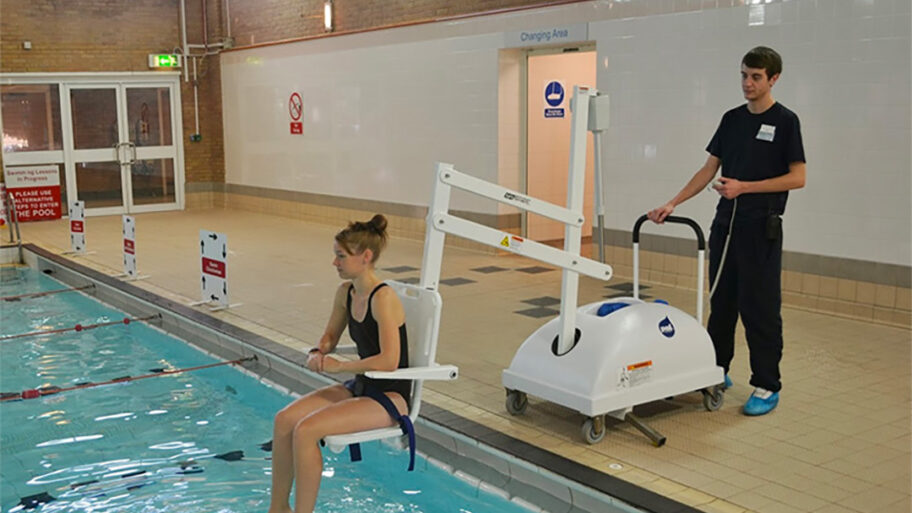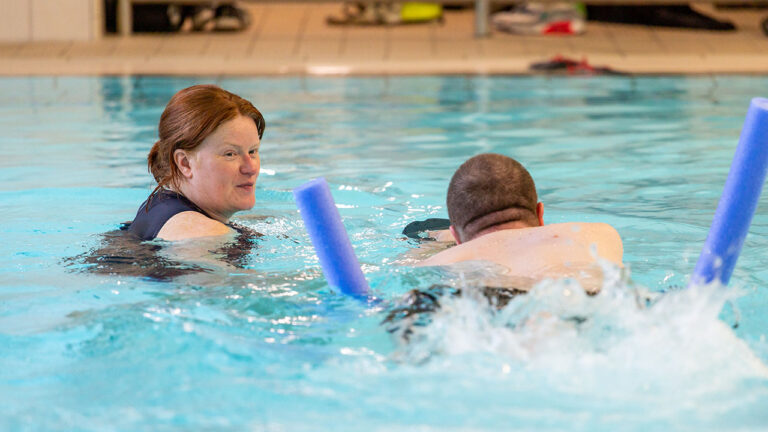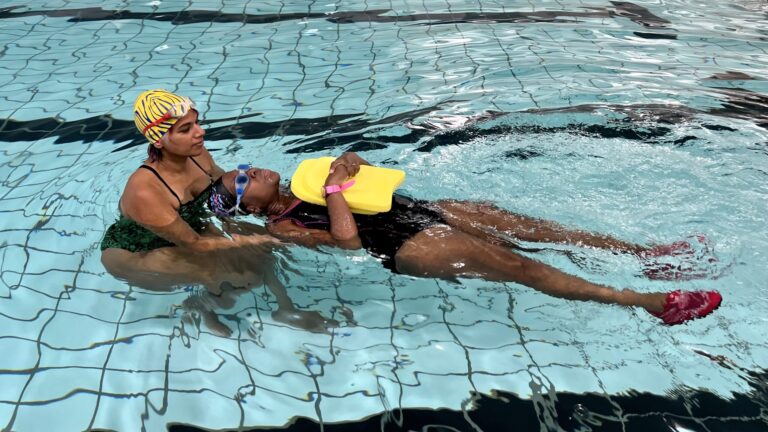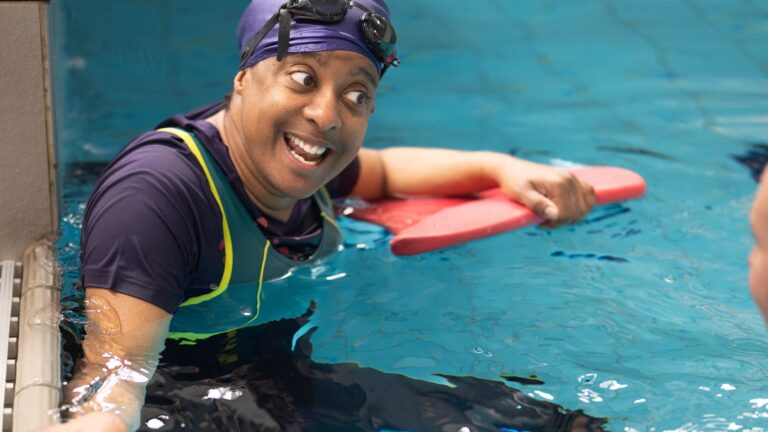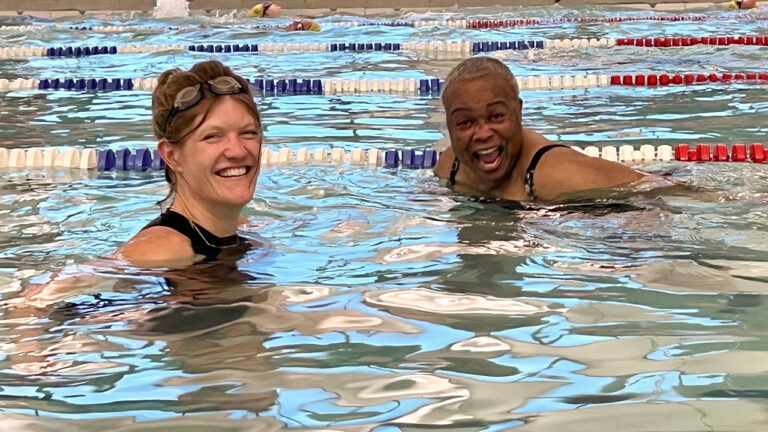We follow up from last week’s blog in which we highlighted the difficulties faced by people with disabilities to get to the pool area itself, from public transport to building accessibility. This week, we look at the special needs of those individuals to get into the water for the swimming session.
Hoists
People with a physical disability or limited mobility may be unable to use the pool ladder or hop in the side, and will therefore require a hoist. Hoists are there to help people with a range of mobility needs, not just wheelchair users, gain safe entry into the pool.
They come in several different styles, which all have pros and cons for the individual users. The most common ones found in pools are floor mounted, with electric power or manual. Some use a platform that can be lowered into the water for individuals who are able to stand, or with a wet-side wheelchair or seat.
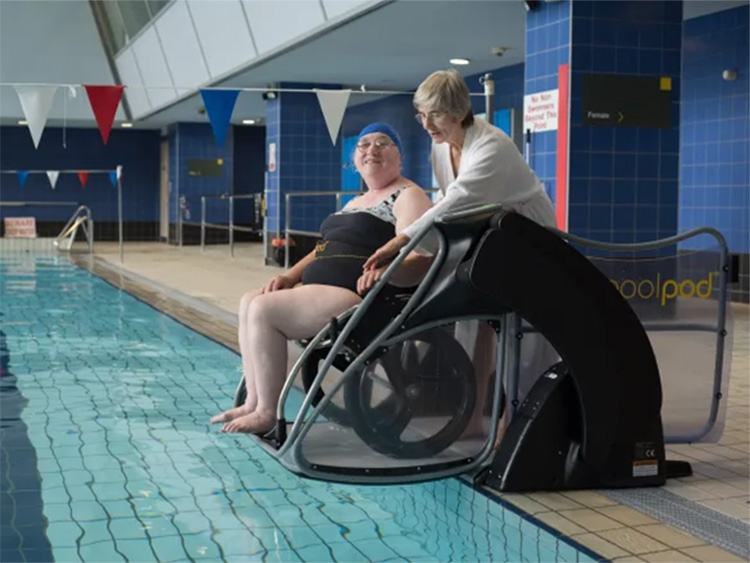
Whatever the style, it is important that it is in good working order, and if it is electric, charged up all the time. This is unfortunately a challenge of the more modern hoists, as they require charging up via a power source. Unless people remember to plug the equipment between use, the hoist may be uncharged when its use is necessary, again making the pool completely inaccessible, resulting in a wasted journey and disappointment for the swimmers.
Getting onto the Hoist
Wheelchair users have to transfer from their own chair onto the hoist. Some people are able to do this poolside, either weight bearing on their legs or with techniques they have been taught. Others will use pool-provided wet-side wheelchairs to get into the changing room and do the transfer there, where there should be an additional hoist to assist in this. Some people are able to do this independently, others will need help from carers.
Pools with Hoists
The swimming.org website provides a map of some of the swimming pools that offer this facility, for example with this search for London pools. Unfortunately, part of the challenge is that this information is often out of date, incomplete, or not easy to find. Part of WeSwim’s ambition is to promote accessible, freely available information to enable everyone the chance to that knowledge before they set off for the pool.
At Ironmonger Row baths, we are fortunate that in addition to the hoist, we also have the steps, which are a better access option for many people. We added information about the accessibility of this pool in our FAQ. Companies are continuously developing new ways to support people with disabilities in the pool, by producing innovative solutions leveraging new technologies. These address some concerns around the planning implications of ramped access as well as the specific needs of the swimmers.
How You Can Help
In all cases, it is best to ask the swimmers for their preferred way of entering the water, so that the selected solution works best for them. For instance, some may just want to take your arm while others may be used to a particular technique or prefer a hoist.
As a swimmer, which pool have you used with the best access facilities? Tell us in the comments. If you are a volunteer, have you had experiences of the different disability access facilities? Next time you visit a pool, watch out for those pieces of equipment.
